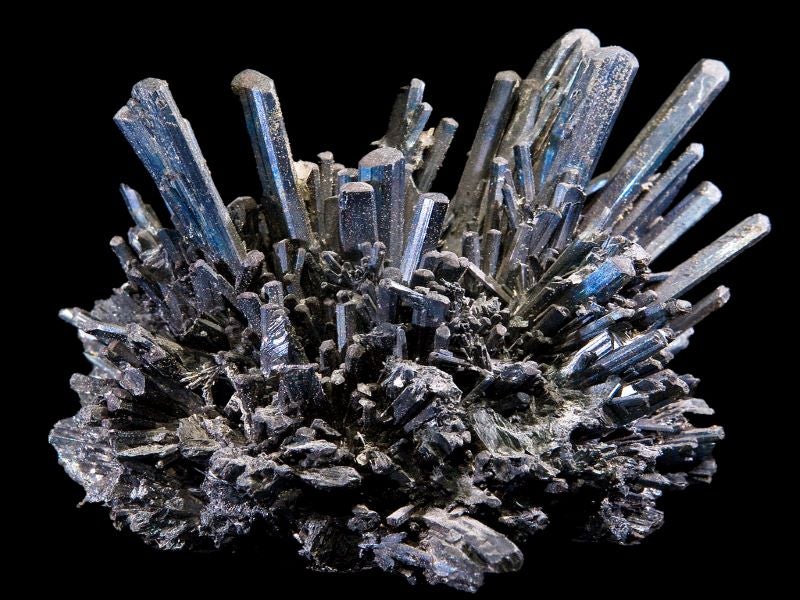The Stibnite gold project being developed by Midas Gold in central Idaho is expected to be one of the biggest and highest-grade open-pit gold mines in the US. It will also be the only primary producer of antimony in the country.
The project is located in a historical mining district that had seen mining operations since 1894 with a sluice box operation by Caswell brothers in the Thunder Mountain mining district, east of Stibnite.
A pre-feasibility study for the project was released in 2014 while the completion of a feasibility study was announced in December 2020. The project is estimated to require an investment of approximately £1.17bn ($1.6bn) for an estimated mine life of 14.3 years.
Project location and geology
The Stibnite gold project is located approximately 245km north-east of Boise and approximately 16km east of Yellow Pine, in Idaho, US. The project covers a total area of approximately 27,104 acres.
The Stibnite ore body is underlain by pre-Cretaceous basement sediments of the Idaho Batholith, Tertiary intermediate to felsic intrusions and volcanics including younger unconsolidated sediments. The central and eastern portions of the property are bound by large, north-south striking, steeply dipping to vertical pronounced gouge and staged breccia.
Mineralisation and reserves
The mineralisation and alteration within the Stibnite property occurs in structurally prepared zones in association with very fine grained disseminated arsenical pyrite in lesser extent as arsenopyrite, while gold occurs in almost solid solution. The antimony mineralisation is primarily associated with stibnite while additional gold mineralization occurs in epithermal quartz-adularia-carbonate veins towards the roof of the stibnite.
The proven and probable mineral reserves at the Stibnite gold project as of December 2020 were estimated to be 104 million tonnes (Mt) grading 1.43g/t gold, 1.91g/t silver, and 0.064% antimony.
The project was estimated to contain 4.8 million ounces (Moz) of gold, 1.2Moz of silver, as well as 148.6 million pounds (Mlbs) of antimony.
Mining methods
The Stibnite Gold Project will utilise the conventional open pit mining method involving drill, blast, load, and haul operations. The mining operations will progress from the highest-grade Yellow Pine deposit to the Hangar Flats and the West End deposits.
The first four years of the mining operations will also involve the removal of the historic tailings stockpile along with the mining at the Yellow Pine open-pit.
The mining fleet will comprise up to four 23.5t front end loaders and up to eighteen 200t haul trucks, and an auxiliary fleet comprising dozers and motor graders.
Mineral processing
The processing plant for the Stibnite gold project will be designed to process the sulphide and oxide ore materials as well as the historical tailings at an average rate of 20,000 tonnes per day (tpd). The finished products will be gold/silver doré bars, and the filtered antimony‐silver concentrate.
The run-of-the-mine (ROM) ore will undergo crushing in a primary jaw crusher followed by grinding in a semi autogenous grinding (SAG) ball mill. The pulp from the grinding mill will be introduced into a two-stage flotation circuit with the first stage producing an antimony-rich concentrate while the gold-rich concentrate will be produced in the second stage.
The gold and antimony-rich concentrates will undergo the pressure oxidation, oxidised concentrate neutralization, and the carbon in leach (CIL) processes before the final carbon handling and refining process.
The loaded carbon from the CIL process will be screened, washed, and transferred to the elution vessel for stripping the precious metals by the pressure Zadra method.
Infrastructure facilities
The Stibnite gold project is accessible via a 114.2km-long road from the intersection of Highway 55 and Warm Lake Road.
The power supply requirement for the project operations is expected to be sourced from the Idaho Power Company’s power grid. It will require the upgrading of approximately 100km of existing transmission lines and the installation of approximately 14.8km of new 138 kV line.
Contractors involved
M3 Engineering & Technology was engaged by Midas Gold to prepare the feasibility study for the project.
Stantec was engaged to carry out the environmental DNA (eDNA) sampling program for the project.





